Just like humans use facial expressions and body language, cats communicate in their own unique ways. While you might be familiar with interpreting their meows and purrs, understanding your cat’s tail movements can unlock a deeper insight into their emotional world. A cat’s tail is a powerful communication tool, and deciphering “Cat Tail Wagging Meaning” can significantly improve your bond with your feline companion.
Why Understanding Cat Tail Language Matters
Learning to read your cat’s body language, particularly their tail signals, is crucial for understanding their feelings in different situations. This knowledge allows you to recognize environments or interactions that bring your cat joy or, conversely, cause them stress or fear. Beyond emotional cues, observing your cat’s tail can also be helpful in spotting early signs of illness or pain, enabling you to seek timely veterinary care. By understanding “cat tail wagging meaning”, you become more attuned to your cat’s needs and wellbeing.
Decoding the Basics of Cat Tail Language
To build a stronger and more trusting relationship with your cat, understanding their tail language is key. Here’s a guide to help you interpret common cat tail positions and movements:
Straight Up Tail: Confidence and Sociability
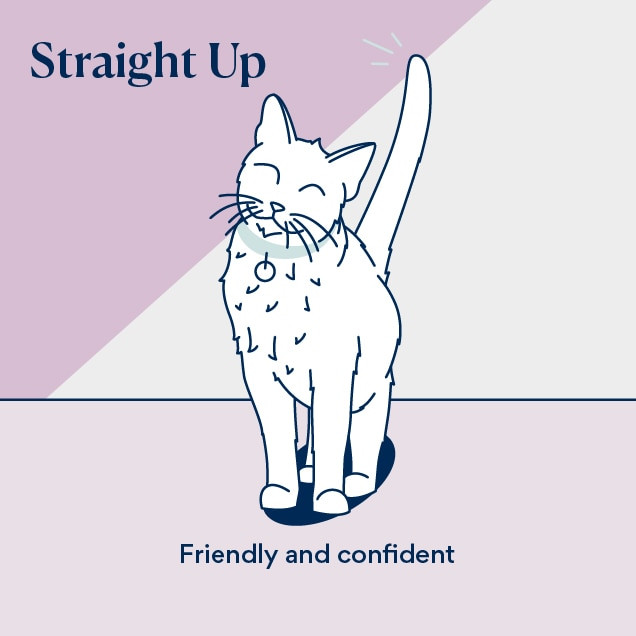 A happy cat with its tail straight up, indicating a friendly and confident mood
A happy cat with its tail straight up, indicating a friendly and confident mood
When a cat holds its tail straight up, it’s a clear sign of confidence and sociability. This upright position indicates they are feeling friendly and are approaching you or other cats in a non-threatening manner.
This tail posture is often observed as a friendly greeting between cats, and it’s also how kittens greet their mothers. A study from the University of Southampton in 1997 highlighted the significance of tail position in feline communication. Researchers found that cats were more likely to approach a cat silhouette with a raised tail, demonstrating its role as a positive social signal.
If your cat approaches you with their tail held high, it’s an invitation for interaction. This is an ideal time to offer petting, engage in playtime, or simply enjoy their friendly company.
Question Mark or Hooked Tail: Happy and Approachable
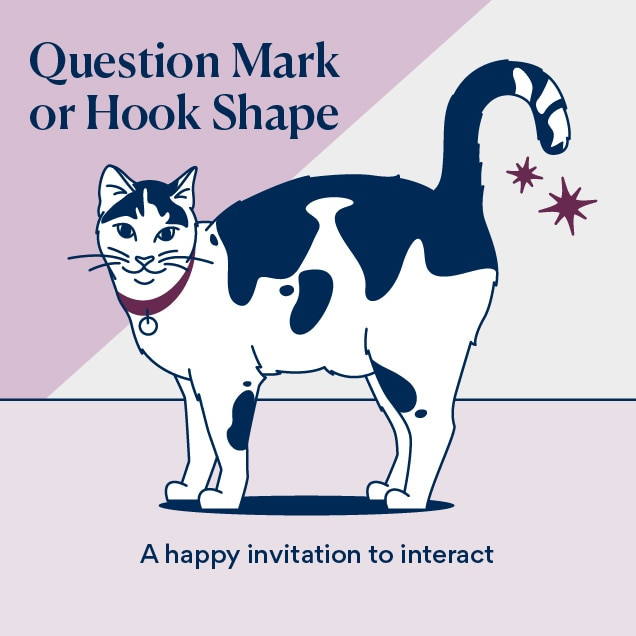 A cat with a question mark shaped tail, signaling happiness and an invitation to interact
A cat with a question mark shaped tail, signaling happiness and an invitation to interact
Sometimes, you might notice your cat’s tail forming a shape like a question mark – upright with a curl at the end. Similar to a straight-up tail, this “question mark” tail signals happiness and a friendly, approachable mood.
A tail in this position is an open invitation for interaction. While the curled tip might be tempting to touch, remember that cats often prefer being petted around their facial glands – on their cheeks, under their chin, and near their ears. Focusing your attention on these areas will likely be more appreciated by your feline friend.
Low Tail: Fear or Anxiety
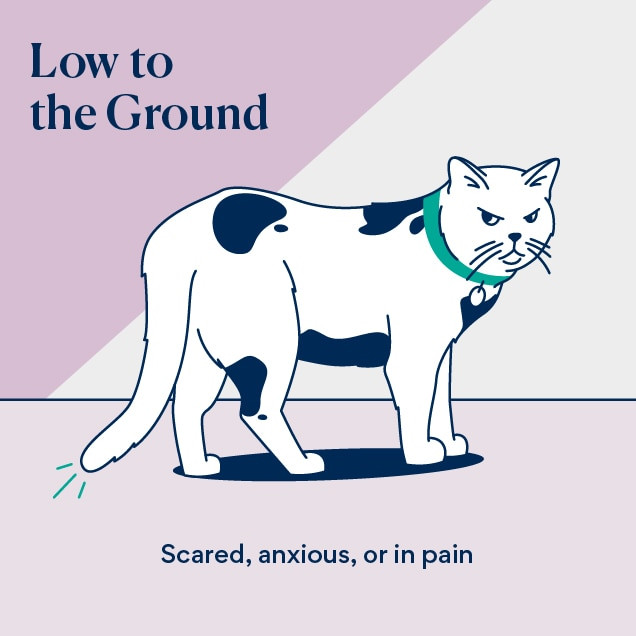 A cat with its tail held low to the ground, indicating fear or anxiety
A cat with its tail held low to the ground, indicating fear or anxiety
When a cat lowers its tail below its back level, it suggests they are feeling frightened or anxious. If the tail is tucked tightly between their legs, it indicates a higher level of fear or even potential pain.
Recognizing this tail position is important for creating a safe and comfortable environment for your cat. Identify and remove any potential stressors to help them feel more secure.
Puffed Up Tail: Startled or Frightened
 A cat with a puffed-up tail and arched back, a classic sign of being startled or frightened
A cat with a puffed-up tail and arched back, a classic sign of being startled or frightened
The classic “Halloween cat” posture – a puffed-up tail combined with an arched back – is a clear indicator that your cat is startled or deeply frightened by a sudden threat.
The fur standing on end, known as piloerection, is an automatic response to make the cat appear larger and more intimidating. This is a defensive mechanism signaling that your cat wants to be left alone. Common triggers for this tail position include perceived threats like unfamiliar animals in the yard, approaching dogs, house guests, or sudden loud noises.
When you observe this posture, it’s crucial to remove the source of stress. Approaching a cat with a puffed tail can be misinterpreted as a further threat, potentially leading to aggression.
Tail Wrapped Around Body: Fearful, Defensive, or Unwell
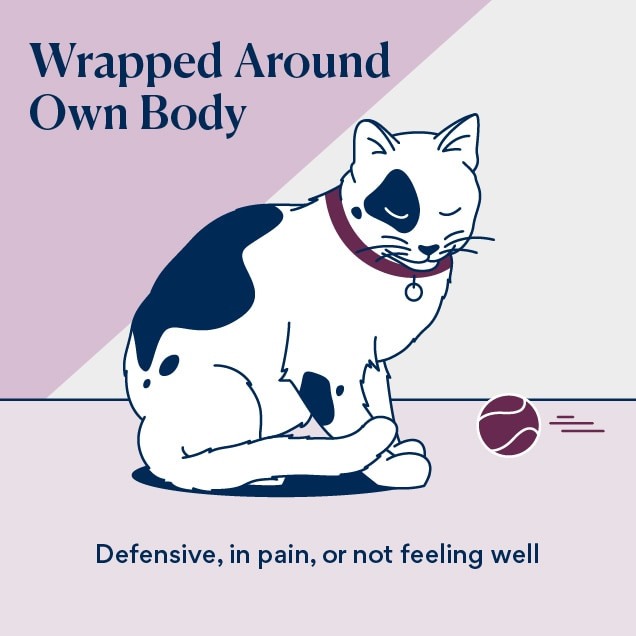 A cat sitting with its tail wrapped around its body, suggesting fear, defensiveness, pain, or illness
A cat sitting with its tail wrapped around its body, suggesting fear, defensiveness, pain, or illness
If your cat is sitting or lying down with their tail wrapped snugly around their body, it often signifies they are feeling frightened, defensive, in pain, or generally unwell. This posture is a way for them to make themselves smaller and protect themselves.
In this situation, it’s best to stop any interaction and ensure their environment is calm and stress-free. If you notice your cat frequently adopting this posture for several days, a veterinary check-up is recommended to rule out any underlying pain or illness.
Deciphering “Cat Tail Wagging Meaning”: It’s Not Always What You Think
Similar to dogs, cats use tail movements to express a range of emotions. However, unlike the often clear and enthusiastic tail wags of dogs, “cat tail wagging meaning” can be more nuanced and varied. Different types of tail movements in cats convey distinct messages. Let’s explore the various “wagging” motions and their interpretations:
Thrashing Tail: Irritation or Anger
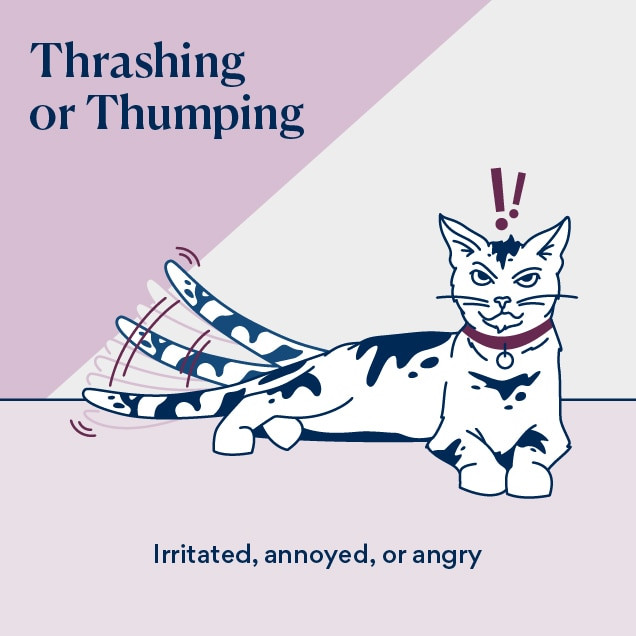 A cat thrashing its tail, indicating irritation, annoyance, or anger
A cat thrashing its tail, indicating irritation, annoyance, or anger
When a cat thrashes its tail forcefully from side to side or thumps it against the ground, it’s a strong signal of irritation, annoyance, or anger. This movement clearly indicates that something is bothering your cat.
This is considered a “distance-increasing” behavior. For instance, if you are petting your cat and they begin to thrash their tail, they are communicating that they want you to stop. Ignoring this signal could escalate the situation, potentially leading to hissing, growling, swatting, or even biting.
Twitching Tail Tip: Playfulness or Mild Annoyance
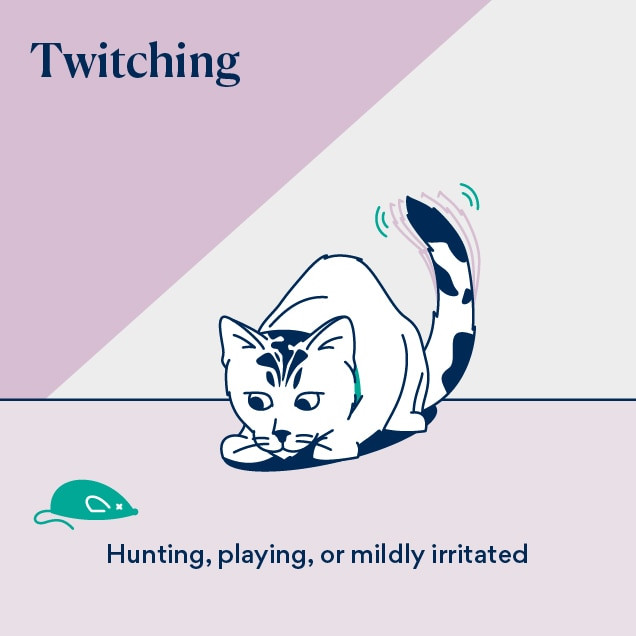 A cat twitching the end of its tail, possibly indicating playfulness, hunting focus, or mild irritation
A cat twitching the end of its tail, possibly indicating playfulness, hunting focus, or mild irritation
Cats often twitch just the tip of their tails in various situations, including when they are hunting, playing, or experiencing mild irritation or frustration. To accurately interpret “cat tail wagging meaning” in this context, you need to consider the surrounding situation and look for other clues to their mood.
If your cat isn’t engaged in play or stalking prey, a twitching tail tip likely indicates mild annoyance. Pay attention to the context to understand which emotion is being expressed.
Swishing Tail: Focused Attention
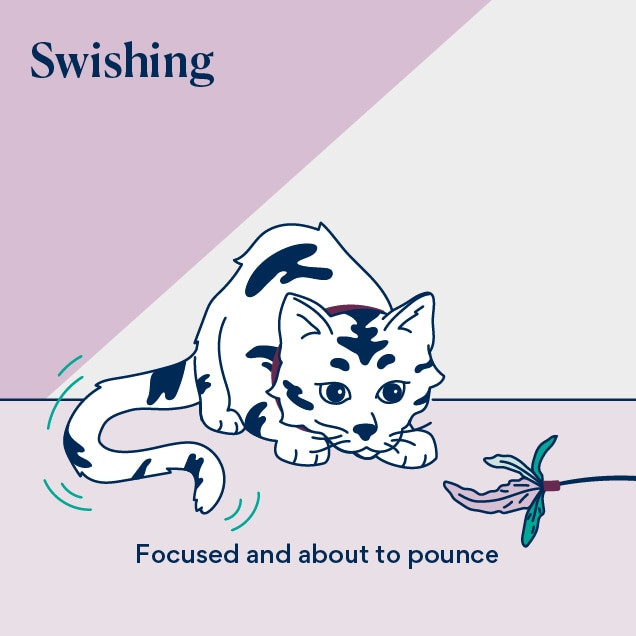 A cat slowly swishing its tail from side to side, suggesting focused attention, possibly before pouncing
A cat slowly swishing its tail from side to side, suggesting focused attention, possibly before pouncing
A slow, deliberate swishing of the tail from side to side often indicates intense focus. Your cat might be fixated on a toy, another pet in the house, or something interesting outside a window. This tail movement often precedes pouncing or other predatory behaviors.
Allowing your cat to engage in these stalking and pouncing behaviors is a great form of enrichment. So, if you observe this tail swishing, let them continue exploring whatever has captured their attention.
Quivering Tail: Excitement or Urine Marking
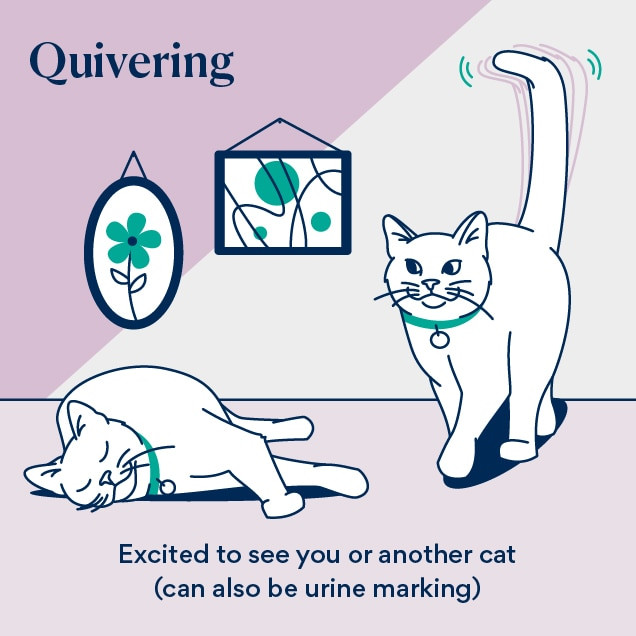 A cat with a quivering tail, indicating excitement or possibly urine marking behavior
A cat with a quivering tail, indicating excitement or possibly urine marking behavior
A quivering or trembling tail can signify strong excitement, particularly when greeting you or another familiar cat. However, it’s important to note that a quivering tail, especially when held straight up while the cat backs up against a vertical surface, can also be a sign of urine marking or spraying.
Observe the context and other behaviors to differentiate between excitement and urine marking. If you suspect urine marking, consult with your veterinarian about addressing this behavior.
Tail Wrapping Around You: Affection and Bonding
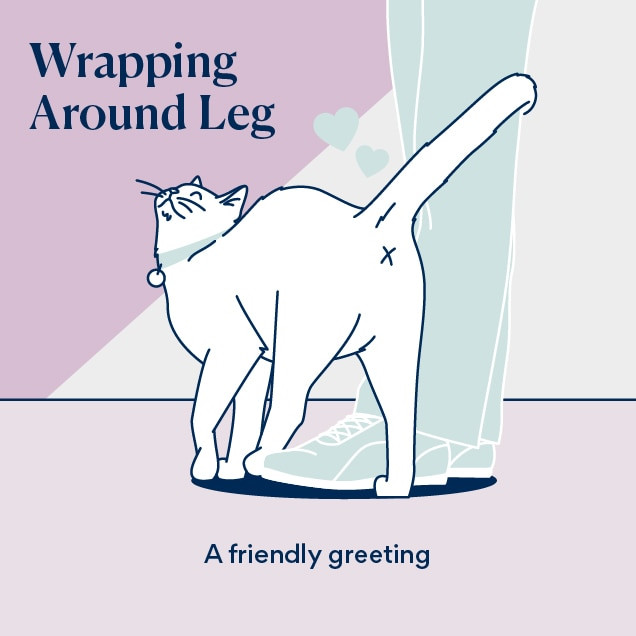 A cat wrapping its tail around a human's leg, a sign of affection and a friendly greeting
A cat wrapping its tail around a human's leg, a sign of affection and a friendly greeting
Just as humans use handshakes or hugs as greetings, cats may curl their tails around people or intertwine tails with other cats as a sign of friendly interaction. Tail wrapping is a social behavior that expresses a willingness to bond and interact affectionately.
While understanding “cat tail wagging meaning” involves considering more than just tail movements, the tail is undoubtedly a highly expressive part of a cat’s body language. By becoming adept at reading these tail signals, you can deepen your understanding of your cat’s emotional state and strengthen the loving bond you share.
